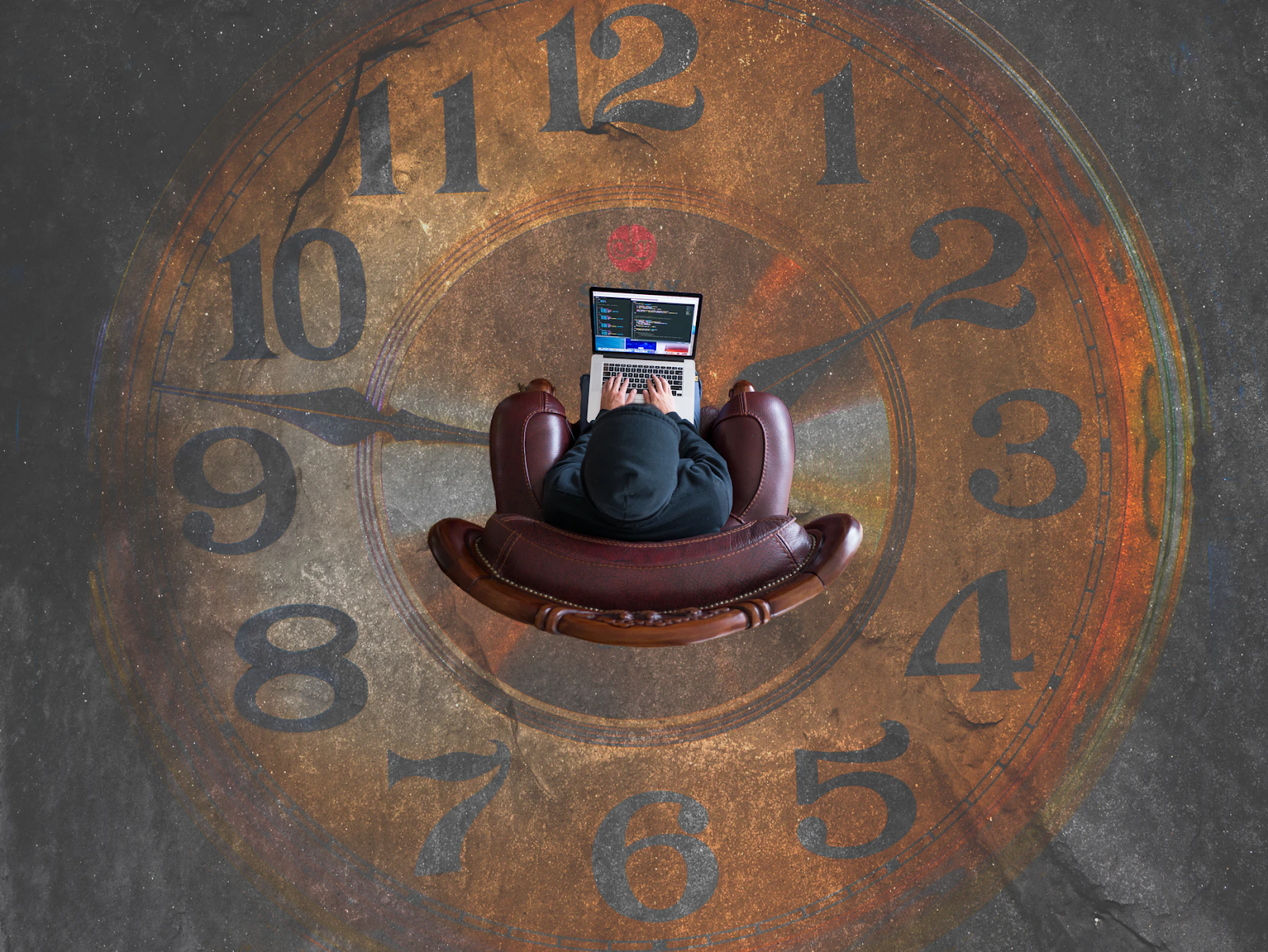In the midst of all the market volatility and uncertainty that’s emerged around COVID-19, droves of workers have been directed to work remotely from their quarantined homes for the first time. No doubt, there’s a learning curve to working from home — and that curve becomes all the steeper when you’re simultaneously expected to cope with a global pandemic and share your new workspace with partners, roommates, and children who have also been sent home.
Our team at SFOX has been fully distributed since our inception in 2014. We’ve experienced the joys and challenges of growing from a team of two founders to a network of 38 employees from San Francisco to Mumbai, all equally committed to building the most advanced crypto trading platform with the best price execution anywhere.
That doesn’t mean that we have all the answers right now: everyone, including companies with pre-existing work-from-home cultures, has to adjust to the realities of working from home during a public health crisis. However, our remote company culture has given our team a unique perspective on which work-from-home best practices might help us all get through this current state of affairs with our mental health and sense of workplace fulfillment intact — and we’ve collected the top five of those best practices from our teammates below.
We hope you find these suggestions useful heading into this weekend. If you’re struggling with the issues we highlight below, consider trying some of our actionable advice this coming week to see if you can make your quality of life in quarantine a little better and more tenable.
1. Set Reasonable Expectations about Productivity with Yourself and Your Teammates
The problem: We could give you plenty of tips on how to stay productive in a remote workplace — and we include some of those tips below — but the most important thing to remember now is that the COVID-19 quarantine many of us are experiencing is not an ordinary work-from-home mandate. From the mere psychological stress of a health crisis to the logistical needs of remaining stocked on supplies and maintaining emergency preparedness, there are plenty of reasons to expect that you will not be as productive as usual, whether or not you normally work from home.
The first step to setting up a sustainable COVID-19 work environment is being honest with yourself and your co-workers about how much you’ll be able to get done. Aaron, head of SFOX research & content, remarks, “For many of us, COVID-19 is an entirely unprecedented experience that already brings unique stresses. If you’re also stressed about the fact that you’re not completing as much work as usual, you’ll just pile on more psychological strain and make it even harder to accomplish anything.”
What to try: Instead of making a list in the morning of everything you want to accomplish that day, make a list at the end of the day of whatever you ended up accomplishing. Share that list with your team. Even if you’ve completed less than normal, this reinforces to you and others that you’re still making valuable contributions while remaining healthy in body and mind — and that should be the fundamental expectation during this time.
2. Keep Your Blood Flowing for Better Physical and Mental Health
The problem: Being able to work on your couch is a double-edged sword. On the one hand, the freedom to work in a more physically relaxed state can be therapeutic and calming; on the other hand, though, prolonged periods of stasis — especially if you’re sitting or reclining — can take a toll on your physical and mental well-being.
This is one of those classic work-from-home challenges that’s even more applicable in the COVID-19 quarantine atmosphere: with increased mental stress and enforced isolation protocols, ordinary remote-work challenges of lethargy and malaise run the risk of getting exacerbated to dangerous extremes. Especially when gyms are shut down, it’s crucial to get creative about how you stay active.
What to try: SFOX technical project manager Anna recommends tactical walks interspersed throughout the day. “Walking is great for the body: it reduces inflammation, helps lower blood pressure, and improves insulin sensitivity in as little as 25 minutes per day. To boot, it’s also great for the mind: it gets our blood flowing, helps clear and refocus our thoughts — and, most importantly, it gets us outside for a bit, which contributes to a healthy circadian rhythm (sleep/wake cycle) if the walk is during early daylight hours.
“Don’t be fooled! You don’t have to take a long walk to reap its benefits. Several five- or ten-minute walks can be just as good, if not better, than a single long one.”
3. Protect Your Time and Space
The problem: Working from an office establishes a natural, physical distinction between your workday and the “everything else” of your life. In a remote-work environment, this distinction can potentially vanish: if you work in the same place where you spend the rest of your time, then the hours you spend working can diffuse across your day and night to the point that it seems as if you need to be “always available” for work.
For many people, COVID-19 is essentially enforcing a lifestyle where all aspects of your life happen within the home. Combine this with (1) asynchronous work communication suites like Slack and (2) the feeling that many companies are in an “all-hands-on-deck” situation where ever more work than usual needs to get done to manage the health crisis, and you may start to get the feeling that work is encompassing your entire life. If you’re suffering from this along with Problem #1, your well-being could become at-risk fairly quickly: imagine feeling that your whole life is defined by work and that you’re “failing” to be productive at your work.
What to try: SFOX engineer Sasha has a simple-yet-effective rule to mitigate this issue: “No make-up hours! Avoid the temptation to make up ‘extra hours’ later in the night if you don’t get everything finished that you would have liked to during your regular schedule. Think long-term about how you manage your time and keep balanced for the long haul.”
You can help yourself to maintain this separation and keep well-defined work hours by keeping your work confined to discrete locations in your home and not letting it “bleed out” to your entire living space. Even if you don’t have a proper home office, try making a specific seat at the kitchen table your “work station” and doing all and only office work in that seat. When you leave that seat, leave the “notification world” of Slack and email, too; if you’re still online, you haven’t really left the office.
Looking for inspiration in designing an at-home workspace? Check out /r/Workspaces.
4. Slack is the New Facebook — Be Mindful of Messaging
The problem: If you’re used to working in a physical office, Slack and similar virtual workplaces might initially seem like a godsend for remote-work productivity — and, in some ways, they are. In other ways, however, these applications can be just as toxic as Facebook and other workplace taboos.
When you’re working remotely and logged into Slack, you run the risk of looking like you’re always available, even if you’re in a meeting or working on a task that requires uninterrupted focus. “Slack exists in a limbo between asynchronous and real-time communication,” Aaron observes: “When a teammate sends you a direct message or tags you in a discussion, it’s not always clear whether you need to respond immediately or if it can wait until later, which can create an unspoken expectation that every message needs to be addressed as soon as you hear the ‘new message’ alert noise. This can run the risk of derailing workflow: there’s plenty of research showing that many tasks require extended periods of undivided attention and can be majorly set back if you’re constantly being pulled away by messages or distractions.”
What to try: Especially if this is your workplace’s first time being fully remotely, you may need to be proactive in communicating how you’ll be setting your status on applications like Slack. There are built-in tools that allow you to temporarily stop receiving notifications (“Do Not Disturb Mode”) or let people see at a glance that you’re indisposed (setting your status to something like “busy,” or integrating Slack with your Google Calendar to show your teammates whenever you’re in a meeting).
As long as you’re clear about what you’re working on, you shouldn’t feel badly about shutting out distractions — even workplace distractions — in order to get a project done. Most services like Slack allow your teammates to override your do-not-disturb setting if they need to reach you with something extremely urgent, so you don’t need to worry about missing anything mission-critical.
5. Enjoy the “Home” in “Work from Home”
The problem: When you’re working from home for the first time in these conditions, the stress of trying to complete work can lead to an unwanted negative perspective on your roommates, family members, or other loved ones quarantined with you. If you’re not careful, you might start thinking of them as “obstacles” or getting frustrated with the ways in which they’re drawing your attention away from work and reducing your productivity.
In the uncertain times of COVID-19, this is a major mistake — but, if you’re not mindful to avoid doing so, you could start getting annoyed at your cohabitants without even realizing it or intending to do so. Coping with working from quarantine comes down to a conscious effort to find the joy and benefits in being able to spend more time with those nearest you.
What to try: Don’t be afraid to think outside-the-box to find ways to enjoy each other’s company both inside and outside of work hours. If you and a loved one are working from at-home quarantine together, try sharing a new playlist of music together while you work; don’t be afraid to take small breaks to enjoy a group activity like cooking or dabbling in a hobby, like a puzzle. If you’re in quarantine alone, make liberal use of video-chat software like Zoom to share meals, have virtual watch-parties, or simply enjoy time together with your loved ones. Most importantly, reconceive of these activities as vital part of your daily life rather than as impediments to getting work done: isolation is one of the most harmful things to the human condition, and it’s in everyone’s best interest — including your company — for you to find positive ways to interact with other people in this trying time.
Over the weekend, take time to reflect on your life in COVID-19 quarantine thus far. What are your key hardships? How has your job changed, and how has your work/life balance shifted? Consider making a plan to try three new things in the coming work week to try to improve that balance and your overall quality of life in quarantine. If you try any of our above suggestions, let us know how they go for you — and, if you’re facing problems we didn’t touch on, please share those challenges with us and how you intend to tackle them.
We’re in this together. From all of us at SFOX, stay safe (and sane) in this time of pandemic — and don’t lose sight of your priorities.
About SFOX: Since 2014, SFOX has been providing institutions, pro traders, and anyone serious about trading crypto with the most advanced investment platform available anywhere. Capture the best prices on BTC, ETH, LTC, BCH, BSV, ETC, and RVN anywhere in the crypto market from a single trading account with smart-routing order types you won’t find anywhere else. Sign up now and see why SFOX has facilitated over $11 billion in trading volume to date.
The above references an opinion and is for informational purposes only. It is not intended as and does not constitute investment advice, and is not an offer to buy or sell or a solicitation of an offer to buy or sell any cryptocurrency, security, product, service or investment. Seek a duly licensed professional for investment advice. The information provided here or in any communication containing a link to this site is not intended for distribution to, or use by, any person or entity in any jurisdiction or country where such distribution or use would be contrary to law or regulation or which would subject SFOX, Inc. or its affiliates to any registration requirement within such jurisdiction or country. Neither the information, nor any opinion contained in this site constitutes a solicitation or offer by SFOX, Inc. or its affiliates to buy or sell any cryptocurrencies, securities, futures, options or other financial instruments or provide any investment advice or service.








